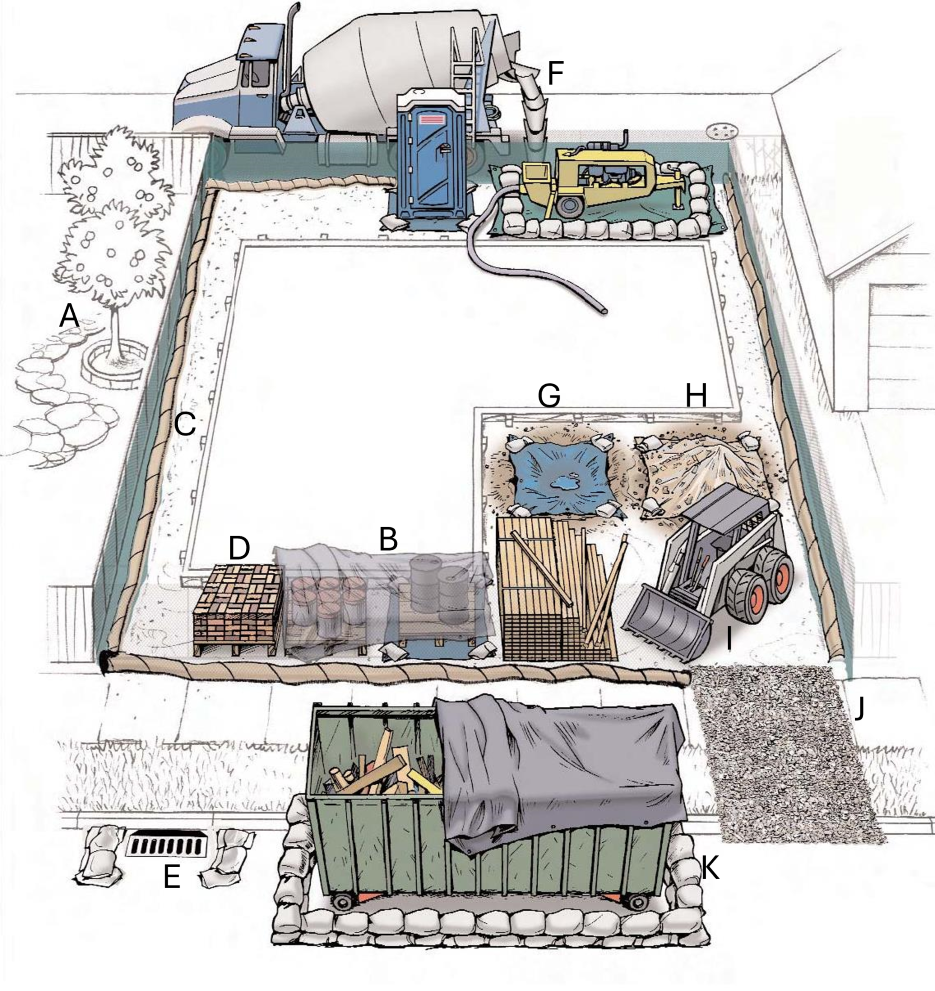Dewatering Activities
A Colorado Department of Natural Resources permit may be required before dewatering during construction.

A. Preserve Existing Vegetation
Preserve existing trees and vegetation where possible to prevent erosion.
B. Paint and Stucco
All paint and stucco materials stored on the site must be contained and covered. It is illegal for contractors to wash out paintbrushes in the street or dump any residues into the sewer or the storm drain. Paintbrushes and spray guns shall be washed/cleaned out into a hazardous materials barrel or put back into its original container and disposed of properly. Latex paint should be dried in its container and placed in the garbage. Oil paint and thinners need to be recycled as hazardous wastes. Keep extra absorbent materials and/or a wet/dry vacuum on site to quickly pick up unintended spills. Sites must also be checked and maintained daily. All chemicals and hazardous materials must be secured to prevent vandalism.
C. Perimeter Controls
Gravel and woodchip bags, silt fences, and fiber roles are typical perimeter controls, and shall be used to surround the entire site. Replace any damaged perimeter controls immediately.
D. Building Materials and Staging Areas
Gravel and woodchip bags, silt fences, and fiber roles are typical perimeter controls, and shall be used to surround the entire site. Replace any damaged perimeter controls immediately.
E. Dewatering Activities
A DNR permit may be required before dewatering during construction.
F. Storm Drains and Catch Basins
Storm drains must be protected at all times with perimeter controls, such as fiber rolls, filter bag inserts, or gravel bags.
G. Concrete Trucks and Pumpers
Any concrete pumpers parked in public streets or alleys should be surrounded by perimeter controls, such as berms or fiber rolls. Tarps also should be placed beneath concrete pumpers at all times. Residual materials must be cleaned up as well.
H. Washout Area
The disposal of "wet" construction materials should be handled in the washout area or off-site. This includes stucco and concrete. Use an impervious tarp to line the bottom and prevent run-off in nearby areas. The washout area must be checked and maintained daily to ensure compliance.
I. Dirt and Grading
Mounds of dirt or gravel should be stored on site and covered each day with a tarp. When in use, all exposed dirt piles should be sprayed with water to prevent excessive dust. Tarps must be available and onsite to cover 125% of exposed areas. All stockpiles must have perimeter controls at all times.
J. Earthmoving Equipment
All earthmoving equipment should be stored onsite. Maintenance and repair should never be conducted on the site. All tracks and trails
left by equipment leading to and from the site should be cleaned up immediately.
K. Dumpsters
Keep dumpsters covered. Areas around dumpsters should be swept daily.

